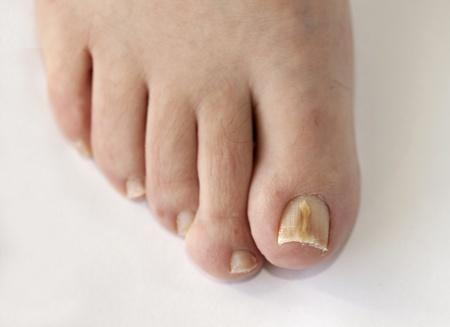Do your toenails appear thicker than normal, yellowish or cracked? Well, if so, you may be suffering from toenail fungus. Toenail fungus is an infection that gets in through the cracks in your nail or cuts in your skin that can make your toenail change color or get thicker. It can also be painful sometimes. Since our toes are often warm and damp, they are the perfect breeding ground for fungus. Different kinds of fungi and yeast can affect different parts of the nail. When these conditions are left untreated, the infection can spread to other toenails, skin, or even fingernails! ICK, right?!
If you are noticing that your toenails are looking like this, there is a good chance that they are infected with fungus. Infected nails are not only usually thicker than normal, but they can be warped or oddly shaped. Typically, they are yellowish in appearance and can break easily. When fungus builds up under your nail, it can loosen and even separate the nail from the bed.
So, why do people get toenail fungus, and who gets it? People who have diabetes, athlete’s foot, or a weak immune system, who smoke, or whose family members have it are also at a higher risk. Men are more likely to get it than women, and older people are more likely to develop toenail fungus, as well. If you are a swimmer, or someone who spends a lot of time in the water… or someone with an injured toenail, your odds for getting toenail fungus go up.
Toenail fungus can be tricky to identify, as it can look like other conditions. It is important to get a diagnosis if you suspect you have it. Dr. Joseph Stuto has two convenient Brooklyn locations for people to visit. You should see a podiatrist if you think you have toenail fungus, as it is often confused with psoriasis.
The good news is that you can treat toenail fungus topically in many cases. However, sometimes an antifungal prescription pill is recommended, and in worst case scenarios- removing the damaged area of the nail or skin. Hopefully, you’ll be one of the people who can get rid of the icky fungus with a topical cream or nail lacquer. Call Dr. Stuto so he can help you get on the road to having fungus-free feet!


